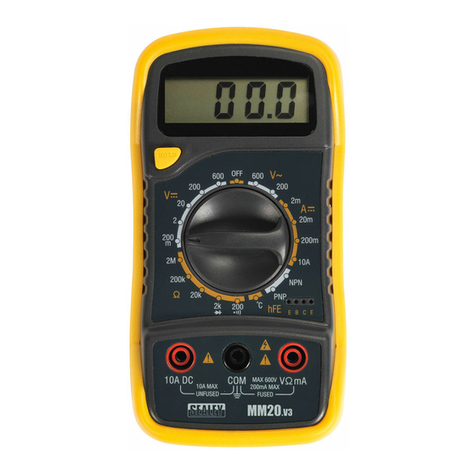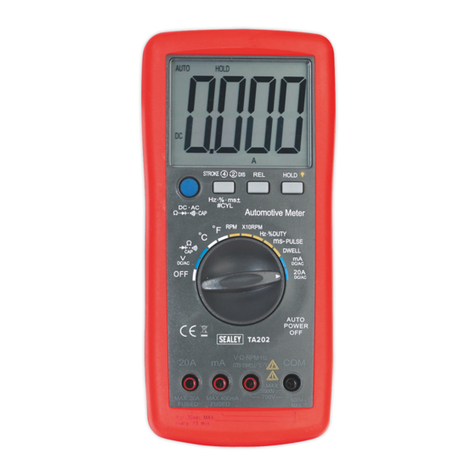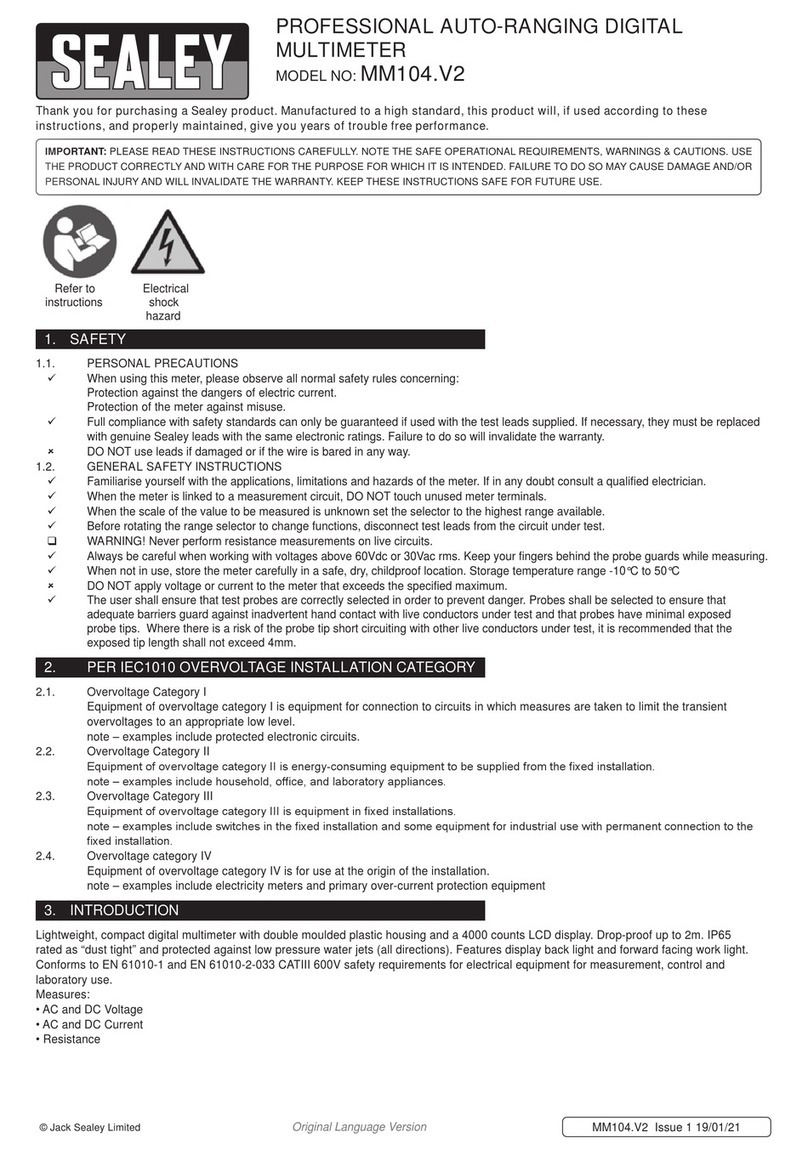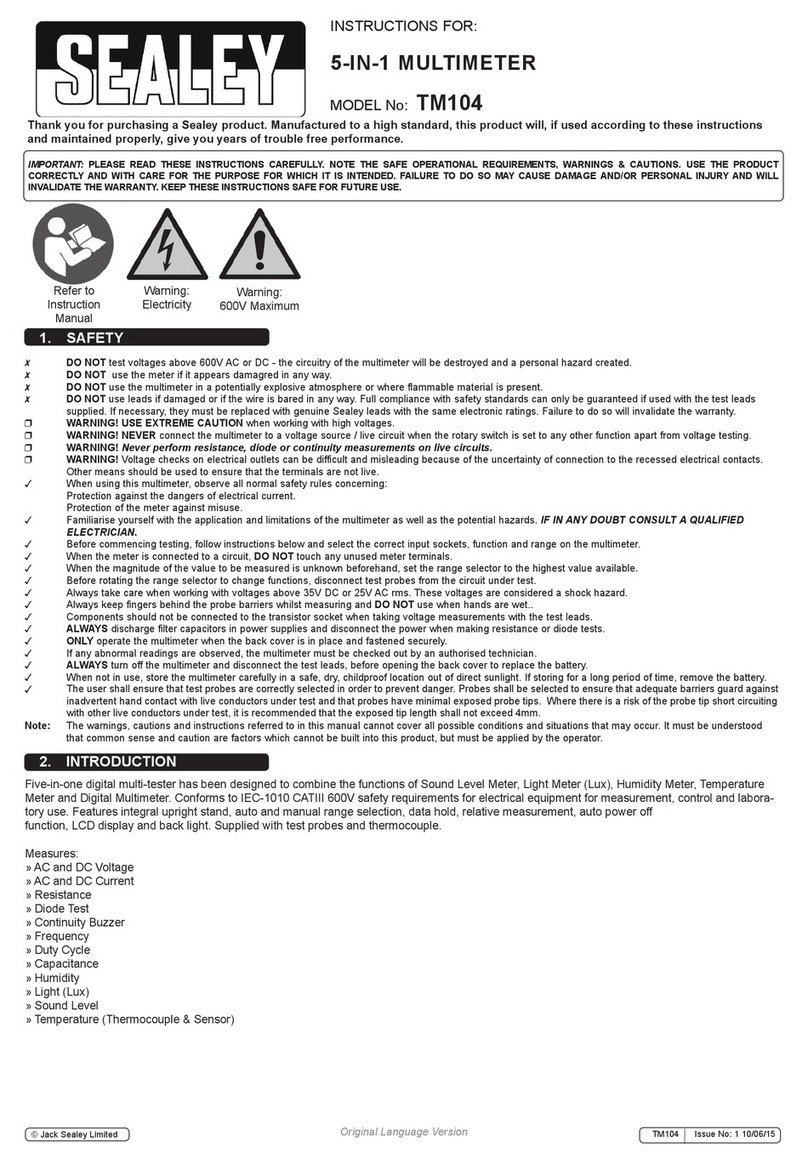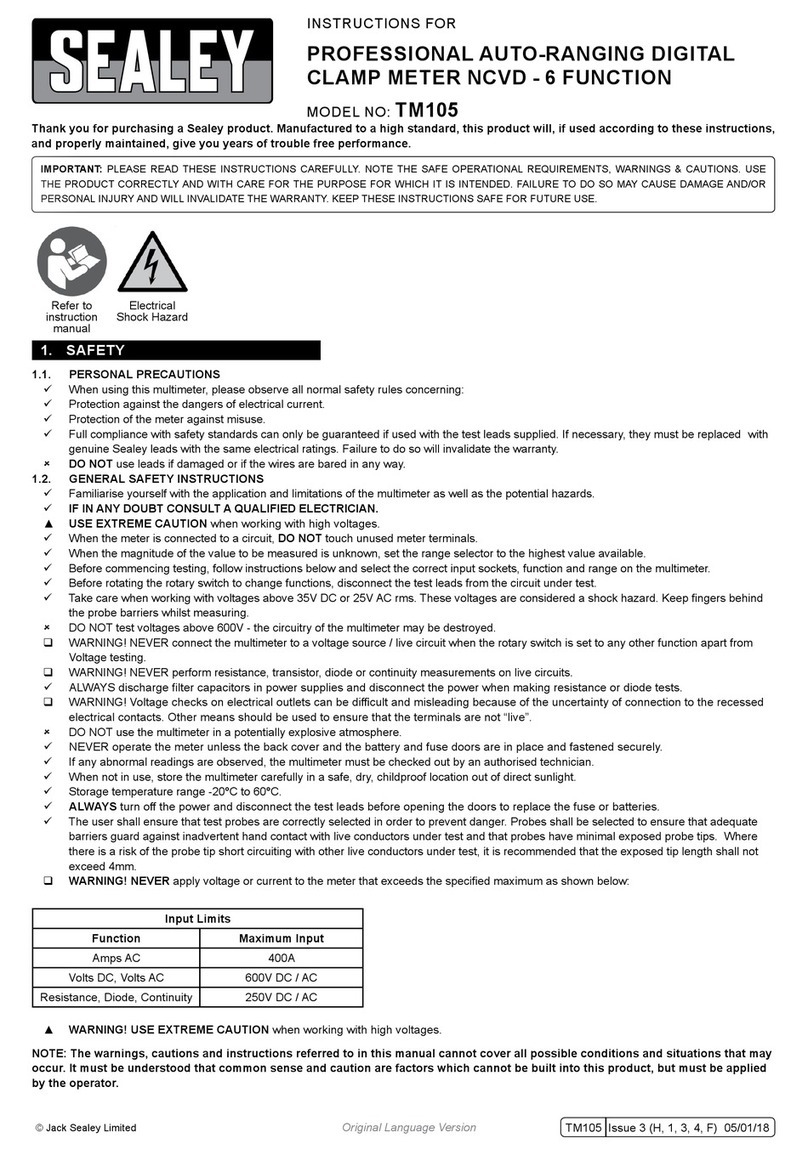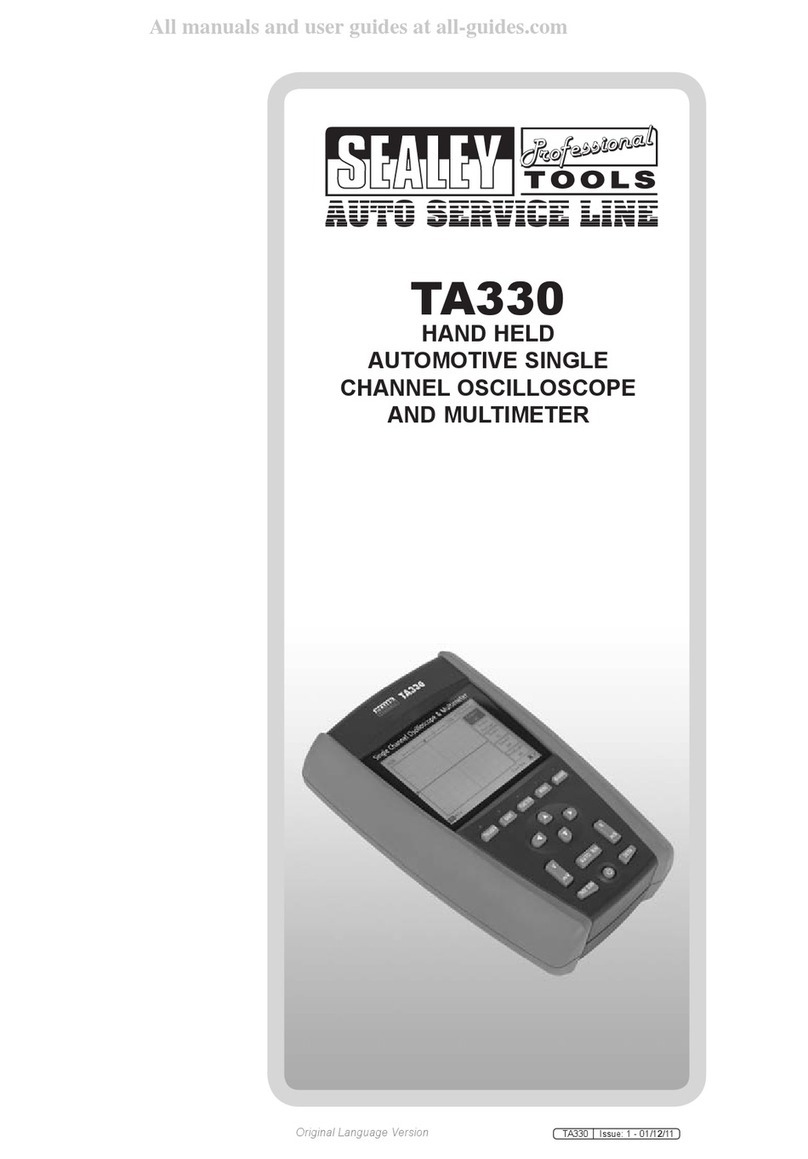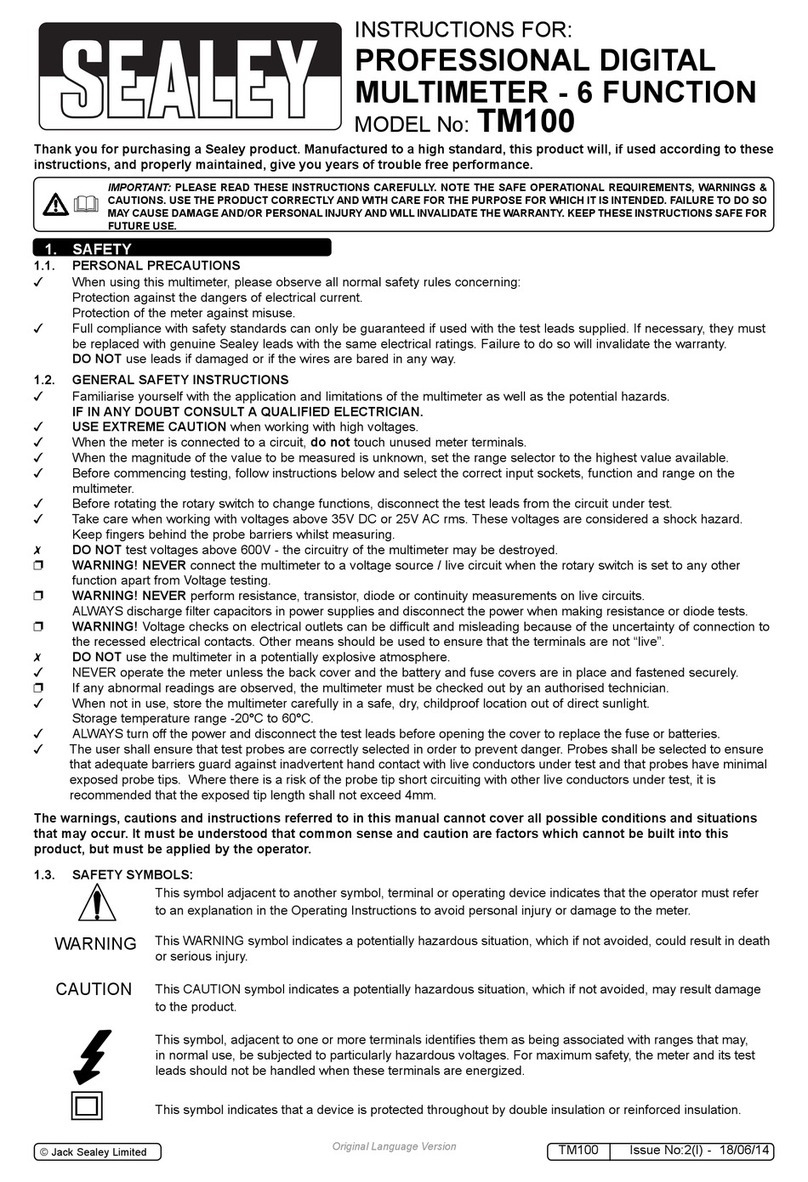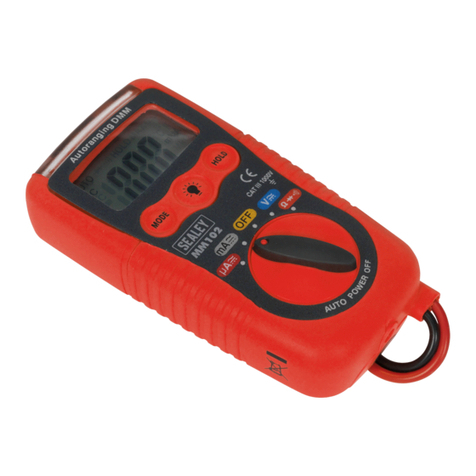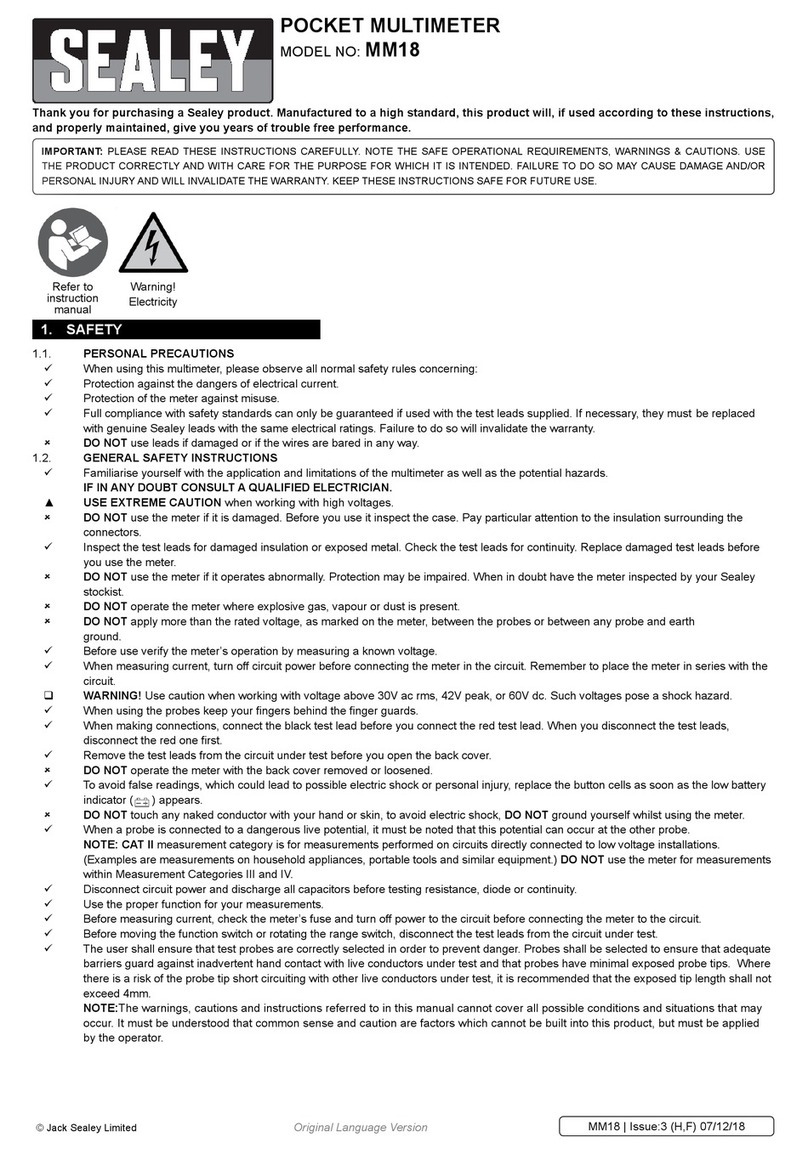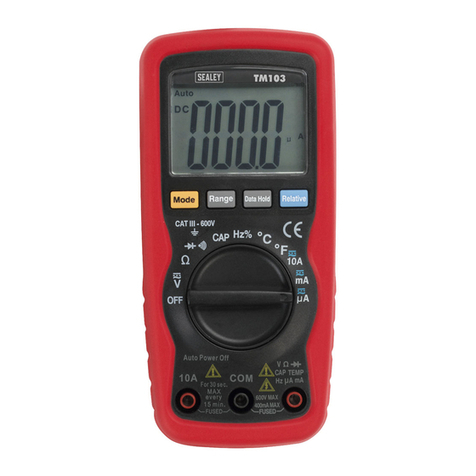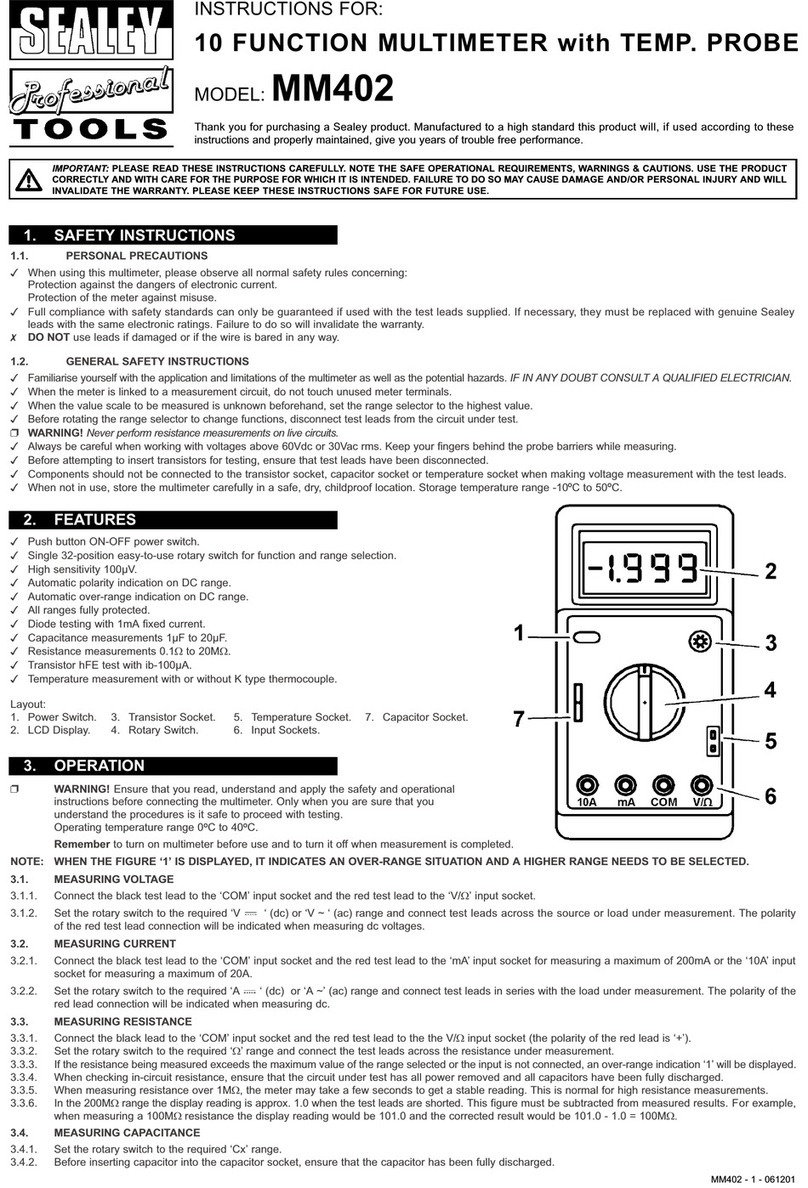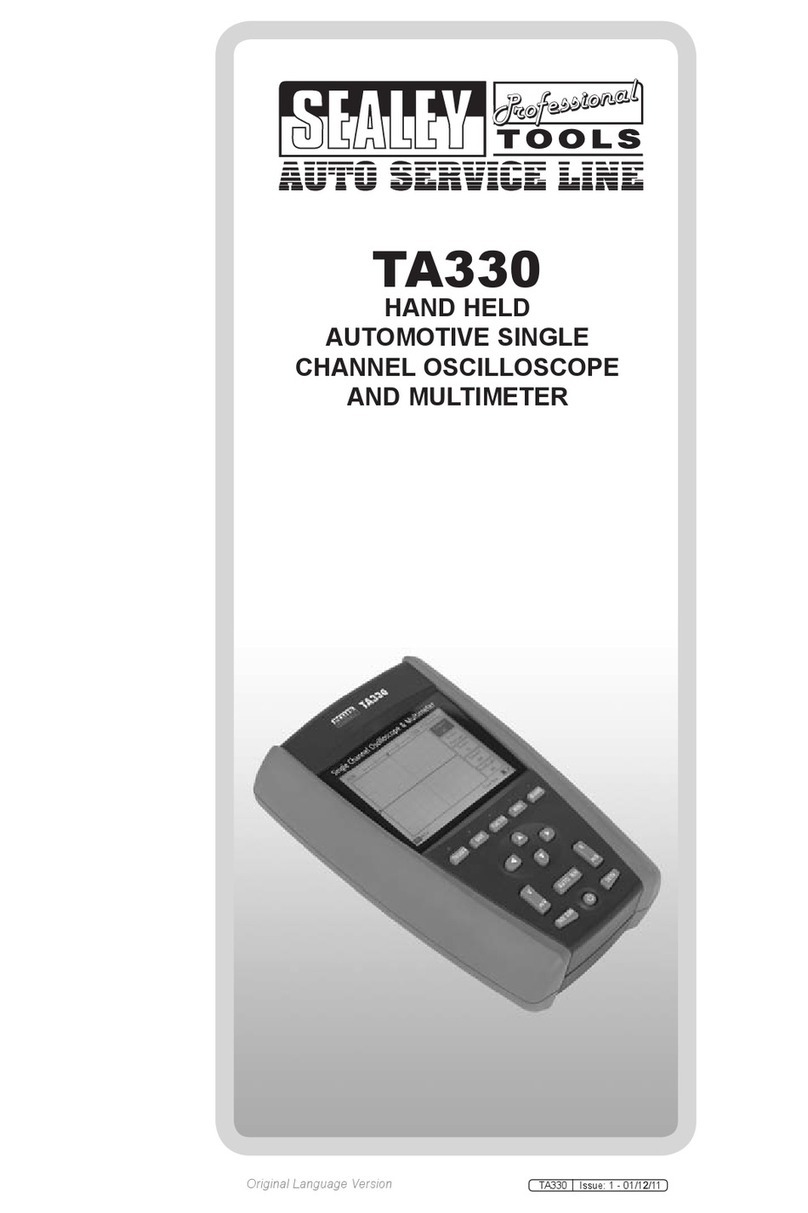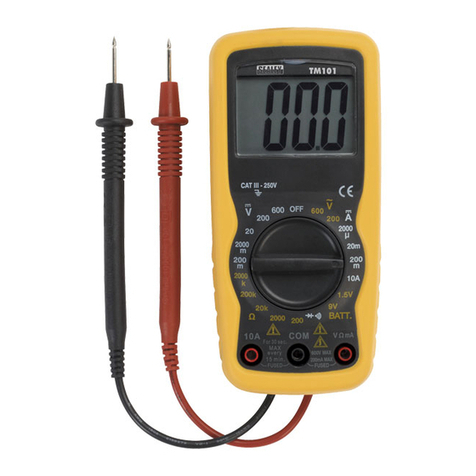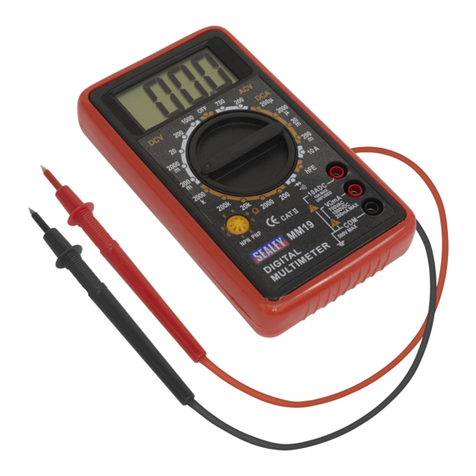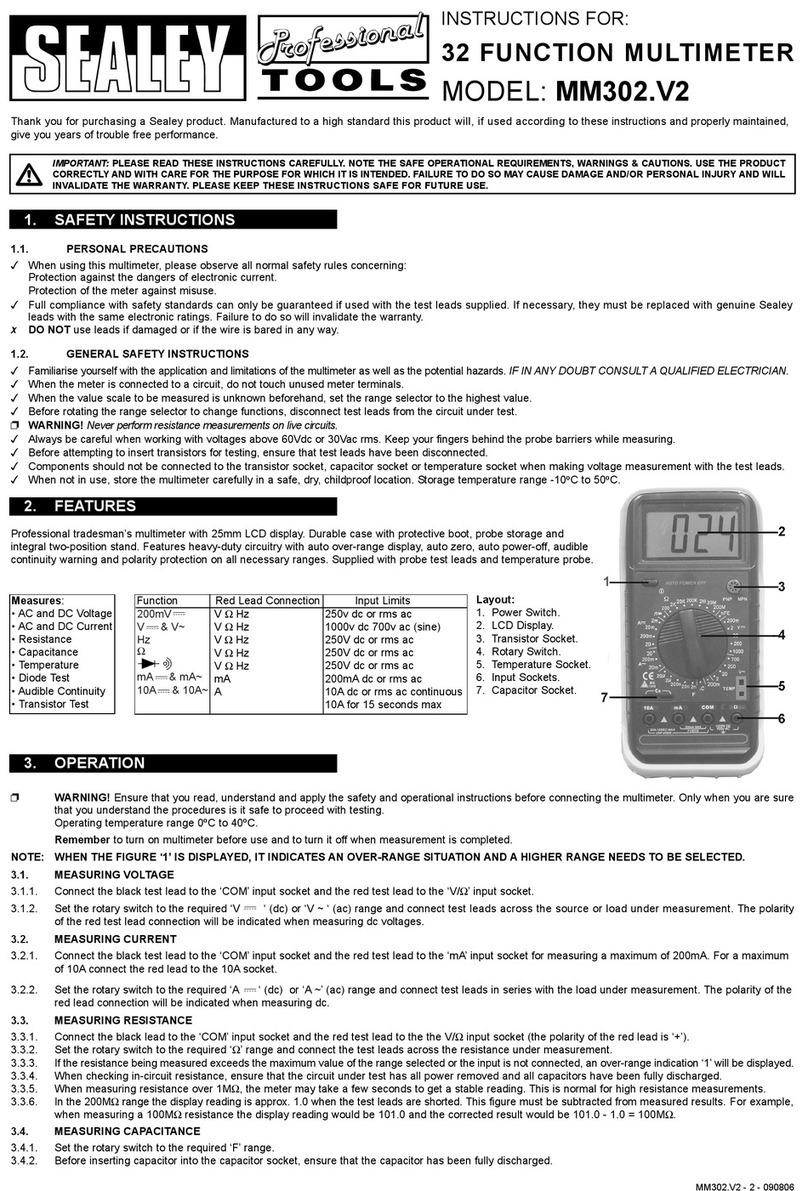
5. MAINTENANCE
4. SPECIFICATION
WARNING! Before attempting to open the case, ensure that the test leads have been disconnected from the multimeter and that it is
switched off to avoid electric shock hazard.
5.1. Changing a fuse.The fuses are located on the back of the circuit board. To gain access to the fuses, remove the protective rubber boot and
the two screws from the rear of the multimeter. Lift off the rear cover, replace the appropriate fuse and re-assemble in reverse order.
WARNING! ALWAYS replace a fuse with one of the correct rating.
Fuse 1: 500mA/250V
Fuse 2: 10A/250V
5.2. If the battery sign appears on the LCD display, it indicates that the battery must be replaced. Repeat the steps detailed in section
5.1 to remove the rear cover, replace the battery (9V PP3) and re-assemble in reverse order.
5.3. Clean the multimeter's casing using a slightly dampened cloth and mild detergent - do not use any abrasives or solvents. Clean the inside
of each terminal using a swab soaked in isopropyl alcohol, use a new swab to apply a light coat of machine oil to each terminal.
5.4.If the multimeter is to be stored for a long period of time, remove the battery first to avoid any damage.
DC VOLTAGE
Range Accuracy Resolution
200mV ±0.8% of reading ±4 digits 100µV
2V ±0.8% of reading ±4 digits 1mV
20V ±0.8% of reading ±4 digits 10mV
200V ±0.8% of reading ±4 digits 100mV
600V ±1.2% of reading ±4 digits 1V
Input impedance: 10MΩfor all ranges. Overload
Protection: 600V dc or peak ac on all ranges.
Overload Protection:200V rms ac for 200mV range and
600V dc or ac for other ranges.
AC VOLTAGE
Range Accuracy Resolution
2V ±0.8% of reading ±5 digits 1mV
20V ±0.8% of reading ±5 digits 10mV
200V ±0.8% of reading ±5 digits 100mV
600V ±1.2% of reading ±4 digits 1V
Input impedance: 10MΩfor all ranges.
Frequency Range: 40Hz to 1kHz
Overload Protection: 220V rms ac for 200mV range and
600V dc or ac for other ranges.
Indication: Average (rms of sine wave).
DC CURRENT
Range Accuracy Resolution
2mA ±0.8% of reading ±4 digits 1µA
20mA ±0.8% of reading ±4 digits 10µA
200mA ±1.2% of reading ±5 digits 100µA
10A ±2.0% of reading ±5 digits 10mA
Overload protection: Fuse 1: 500mA/250V
Maximum Input Current: Fuse 2: 10A/250V (10A
up to 15 seconds).
Measuring Voltage Drop: 200mV.
AUDIBLE CONTINUITY TEST
Range Description
Buzzer sounds if
resistance is less than 30 Ohms
Open Circuit Voltageapproximately 2.8V
BATTERY TEST
Range Accuracy Current
1.5V ±0.8% of reading ±2 digits 60mA
9.0V ±0.8% of reading ±2 digits 12mA
TRANSISTOR hFE TEST (External test socket)
Range Description Test Condition
hFE Displays approximate
hFE value (1-1000) of
transistor.
Base current
approximately 10µA.
VCE approximately
2.8V.
AC CURRENT
Range Accuracy Resolution
2mA ±1.2% of reading ±3 digits 1µA
20mA ±2.0% of reading ±3 digits 10µA
200mA ±2.0% of reading ±3 digits 100µA
10A ±3.0% of reading ±7 digits 10mA
Overload protection: Fuse 1: 500mA/250V
Indication: Average (rms of sine wave).
Maximum Input Current: Fuse 2: 10A/250V (10A
up to 15 seconds).
Measuring Voltage Drop: 200mV.
Frequency Range: 40Hz to 1kHz.
RESISTANCE
Range Accuracy Resolution
200Ω±1.0% of reading ±8 digits 0.1Ω
2kΩ±1.2% of reading ±8 digits 1Ω
20kΩ±1.2% of reading ±8 digits 10Ω
200kΩ±1.2% of reading ±8 digits 100Ω
2MΩ±1.2% of reading ±8 digits 1kΩ
20MΩ±1.2% of reading ±8 digits 10kΩ
Maximum open circuit voltage less than 750mV.
Overload protection: 220V dc/ac rms on all ranges.
Environmental Protection.
Recycle unwanted materials instead of disposing of them as waste. All tools, accessories and packaging should be sorted,
taken to a recycle centre and disposed of in a manner which is compatible with the environment.
When the product is no longer required, it must be disposed of in an environmentally protective way.
Battery Removal.
See Section 5.2.1. Remove and dispose of according to local authority guidelines.2.
NOTE: It is our policy to continually improve products and as such we reserve the right to alter data, specifications and component parts without prior notice.
IMPORTANT: No liability is accepted for incorrect use of this product.
WARRANTY: Guarantee is 12 months from purchase date, proof of which will be required for any claim.
INFORMATION: For a copy of our latest catalogue and promotions call us on 01284 757525 and leave your full name and address, including postcode.
Sole UK Distributor, Sealey Group,
Kempson Way, Suffolk Business Park,
Bury St. Edmunds, Suffolk,
IP32 7AR
Original Language Version
01284 757500
01284 703534
sales@sealey.co.uk
www.sealey.co.uk
Web
email
MM24 Issue No: 2 - 02/07/10
DIODE TEST
Range Description Test Condition
(2k)
Displays approximate
forward Voltage of
Diode
Forward DC current
approximately 1mA.
Reversed DC voltage
approximately 2.8V
Parts support is available for this product. To obtain a parts listing and/or diagram,
please log on to www.sealey.co.uk, email sales@sealey.co.uk or phone 01284 757500.
